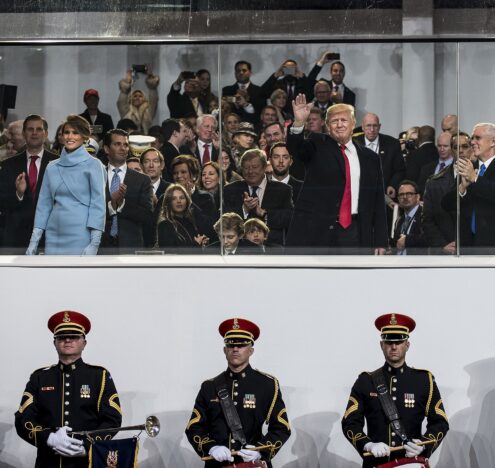This analysis was featured in Critical State, a weekly newsletter from Inkstick Media and The World. Subscribe here.
Terrorism is violence defined by spectacle, intended to serve political aims. The specific ideologies behind terror attacks vary wildly, a distinction that matters not just in how a group or individual decides to attempt a terror attack but also in how societies receive the attacks. One of the more enduring features of response to terror attacks in the 21st century is how a society’s discourse, shaped by elites in political parties and media, chooses to treat terrorists on a case-by-case basis. Is the person who drove a car into a crowd following an ideology deemed alien and seen as someone whose radicalization was imported from abroad as a nefarious scheme to shatter democracy? Or is the ideology simply the act of a lone wolf following national sympathies to an unfortunate conclusion, even if the discourse broadly agrees with their motive while condemning their means?
In “How terrorist attacks distort public debates: a comparative study of right-wing and Islamist extremism,” Teresa Völker compares the reaction in discourse in Germany to incidents of both Islamist and far-right terrorism, looking at seven fatal incidents that have transpired since 2015.
Crucial to the shaping of these debates is the exclusion of the perspectives of victims, especially victims of far-right terror. Muslims residing within Germany were both targeted for violence by the far-right and scapegoated as potential threats following Islamist attacks.
“The ideological motive for the terrorist attacks influenced the political interpretation of the events and public framing of the central security threat: after Islamist attacks, the majority of statements referred to Muslims as a broad outgroup and migration as the central security threat. In contrast, after extreme right attacks, the majority of statements referred to right-wing extremists as a narrow outgroup and reduced the central security threat to isolated fringe actors,” finds Völker.
While far-right and Islamist terrorists diverge ideologically, both are acts targeted to some degree at replacing the existing democratic government structure with a different set of received laws. Yet, the disparity between coverage and response, even in the narrow subset of incidents where the terrorists were successful in killing people, illustrates the divergent ways elites within Germany were able to set the tone and bounds of national conversation after an attack.
“After Islamist and extreme right attacks, right-wing parties were the more successful crisis communicators, although extreme right attacks would have provided opportunities for left-wing parties to criticize extreme right ideologies. This confirms previous research findings that right-wing actors are successful issue entrepreneurs in moments of crisis,” writes Völker.
On immigration in particular, far-right parties were able to effectively argue that Islamist terror justified deportations and immigration restrictions and that far-right violence should also be met by cracking down on immigration. In both cases, the far-right is able to spin immigration as the threat vector, supposedly bringing in a foreign violent actor while portraying nationalist violence against immigrants as a consequence not of nationalism but immigration.
Crucial to the shaping of these debates is the exclusion of the perspectives of victims, especially victims of far-right terror. Muslims residing within Germany were both targeted for violence by the far-right and scapegoated as potential threats following Islamist attacks. Victims of attacks, writes Völker, “such as ethnic and religious minorities rarely gained any discursive space to share their perspective and influence public perception.”



















